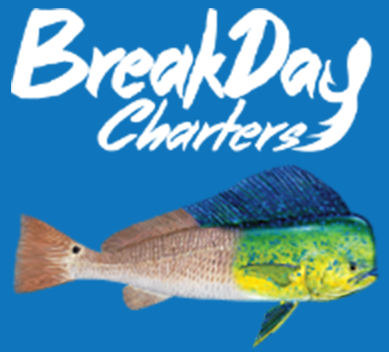Premier Offshore Mahi Fishing Destination
Morehead City stands as one of North Carolina's premier gateways for offshore mahi-mahi fishing, offering exceptional access to the productive waters where these colorful gamefish thrive. The city's strategic location provides quick access to the Gulf Stream's edge, where mahi-mahi concentrate around floating debris, current breaks, and temperature gradients. Understanding effective trolling techniques and reading ocean conditions significantly improves success rates when targeting these spectacular fighters.
Mahi-mahi, also known as dolphinfish or dorado, are renowned for their vibrant colors, acrobatic fights, and excellent table quality. These pelagic predators inhabit the warm, blue waters of the Gulf Stream, where they feed on flying fish, squid, and various baitfish species. Their schooling behavior and aggressive feeding habits make them ideal targets for trolling techniques when conditions align properly.
Understanding Mahi-Mahi Behavior and Habitat
Successful mahi fishing begins with understanding their preferred habitat and feeding behavior. Mahi-mahi are attracted to floating objects, current edges, temperature breaks, and areas where different water masses converge. They often school around sargassum weed lines, debris, and other flotsam that concentrates prey species and provides ambush opportunities.
The Gulf Stream's dynamic nature creates ideal mahi habitat through upwelling, current convergences, and temperature variations. Professional charter captains understand how to read water color changes, identify productive current edges, and locate the floating cover that attracts schools of mahi. Offshore fishing charters from Morehead City target these specific habitat features to maximize encounter rates with feeding fish.
Effective Trolling Techniques
Trolling remains the primary technique for locating and catching mahi-mahi in offshore waters. High-speed trolling with artificial lures allows anglers to cover extensive areas while searching for active schools. Effective lure selection includes colorful trolling plugs, skirted ballyhoo rigs, and cedar plugs that mimic the baitfish mahi prefer.
Speed control becomes crucial for successful mahi trolling. Most productive speeds range from 6-9 knots, allowing lures to work properly while covering ground efficiently. Experienced captains adjust speeds based on sea conditions, lure types, and fish activity levels. When schools are located, slowing down or stopping allows for more thorough fishing of productive areas.
Reading Water and Locating Fish
Offshore fishing success depends heavily on the ability to read water conditions and identify productive fishing areas. Color changes, current edges, floating debris, and bird activity all provide clues about mahi locations. The transition from green inshore water to deep blue Gulf Stream water often holds feeding fish, particularly when debris lines are present.
Water temperature variations create feeding opportunities that attract mahi-mahi. Temperature breaks of even one or two degrees can concentrate baitfish and predators. Advanced fishing techniques include using temperature gauges and fishfinders to identify these productive zones where different water masses meet.
Equipment and Tackle Considerations
Mahi fishing requires balanced tackle capable of handling strong fish while maintaining trolling effectiveness. Medium to medium-heavy trolling outfits provide sufficient backbone for fighting fish while allowing proper lure presentation. Quality reels with smooth drags become essential when multiple fish are hooked simultaneously, which commonly occurs with schooling mahi.
Lure selection plays a crucial role in mahi fishing success. Bright colors, natural baitfish patterns, and varied lure types increase opportunities for strikes. Maintaining sharp hooks, checking leader material regularly, and having backup tackle ready ensures productive fishing when schools are encountered. Wire leaders may be necessary when wahoo are present in the same waters.
Seasonal Patterns and Optimal Timing
Mahi-mahi fishing from Morehead City follows seasonal patterns that experienced anglers learn to exploit. Late spring through early fall typically provides the most consistent action as water temperatures warm and fish move closer to the continental shelf. Peak summer months often produce the most reliable fishing as resident populations establish in local waters.
Weather conditions significantly impact mahi fishing success. Calm seas allow for better boat handling and lure presentation, while rough conditions can scatter fish and make fishing difficult. Planning trips around favorable weather windows improves both safety and fishing success. Early morning departures maximize fishing time during peak feeding periods.
Advanced Strategies and Techniques
Experienced mahi fishermen employ advanced strategies to maximize their success. When schools are located, maintaining boat position and continuing to fish the area thoroughly often produces multiple fish. Switching to live bait or casting lures to visible fish can trigger additional strikes from wary individuals.
Understanding the behavior of hooked mahi helps land more fish successfully. Mahi often school tightly, meaning keeping hooked fish in the water may keep the school nearby for additional fishing opportunities. Professional charter operations equipped with proper equipment and experienced crews significantly improve success rates when targeting these exciting gamefish.
Planning Your Mahi Fishing Adventure
Successful mahi fishing requires understanding seasonal timing, weather patterns, and optimal conditions. Full-day offshore trips provide the time needed to reach productive waters and thoroughly fish promising areas. Early departures allow maximum fishing time in prime locations while providing flexibility to move between different fishing areas as conditions change.
Ready to experience the excitement of mahi fishing from Morehead City? Contact Breakday Charters at (252) 732-0990 to book your offshore mahi fishing adventure. Our experienced crew understands the techniques, locations, and timing that produce successful mahi trips in the productive waters beyond North Carolina's Crystal Coast.
